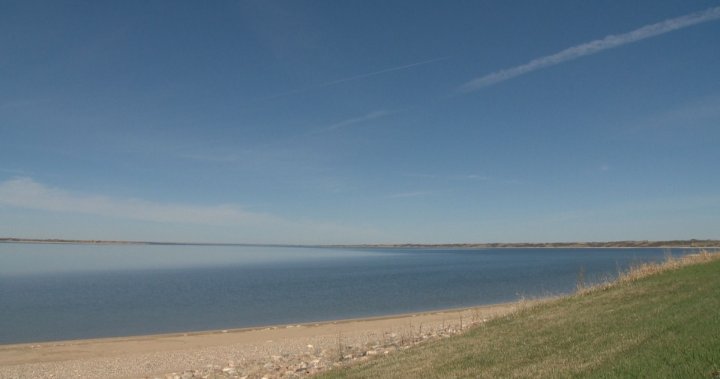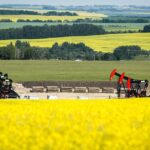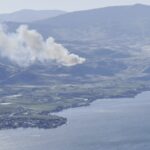The picturesque shores of Lake Diefenbaker are revealing more beach than water this spring, sparking serious concerns among Saskatchewan residents and water management officials. As receding shorelines expose previously submerged land, questions about the reservoir’s capacity and the province’s water security have moved to the forefront of public discourse.
“We’re seeing historically low levels that haven’t been recorded since the early 1990s,” explains Sarah Reimer, senior hydrologist with the Saskatchewan Water Security Agency (WSA). “The reservoir currently sits at approximately 75 percent of its normal capacity for this time of year—a deficit that’s becoming increasingly difficult to ignore.”
The troubling situation stems from a perfect storm of environmental factors. Winter snowfall in the Rocky Mountains, which feeds the South Saskatchewan River system, fell significantly below average for the second consecutive year. This mountain snowpack deficit, combined with below-normal precipitation across the prairie watershed, has dramatically reduced inflows to the 225-kilometer-long reservoir that serves as Saskatchewan’s primary water storage facility.
Local resident James Thornhill, who has lived near the lake for over three decades, expressed his concern while walking along an expanded shoreline near Elbow. “I’ve never seen the water pull back this far in April. We’re usually dealing with spring runoff raising levels right now, not watching them drop further.”
The WSA confirms that April inflows are measuring roughly 65 percent of normal volumes, continuing a troubling trend that began last autumn. Officials are now implementing conservation strategies and coordinating with upstream and downstream jurisdictions to manage the available water resources.
Lake Diefenbaker, created in the 1960s with the construction of the Gardiner and Qu’Appelle River dams, serves multiple critical functions beyond recreation. The reservoir provides drinking water to approximately 60 percent of Saskatchewan’s population, irrigation for agricultural operations, cooling water for power generation, and habitat for numerous aquatic species.
Dr. Eleanor Campos, a water resources specialist at the University of Saskatchewan, notes that the current situation highlights vulnerabilities in prairie water management. “Lake Diefenbaker was designed as our buffer against drought, but sustained low precipitation tests the system’s limits. Climate modeling suggests these conditions may become more frequent, raising questions about long-term water security in Saskatchewan.”
Municipal leaders from communities surrounding the lake have begun discussions with provincial authorities about potential water use restrictions if conditions don’t improve. Meanwhile, agricultural producers who depend on irrigation from the reservoir are analyzing potential impacts on this year’s growing season.
“We’re closely monitoring the situation and working with all stakeholders to ensure essential water needs are met,” assured Kevin Barnes, WSA’s Director of River Basin Operations. “While the situation is concerning, the reservoir was designed precisely for these scenarios—to store water during abundant years for use during drier periods.”
Environmental groups have seized the moment to advocate for enhanced conservation measures and climate adaptation strategies. The Prairie Water Alliance has called for a comprehensive review of water management policies, suggesting the current situation represents “a preview of challenges that will only intensify with climate change.”
As summer approaches, officials are watching mountain snowmelt patterns carefully, though early indications suggest below-average runoff will continue. The WSA has implemented modified release schedules from the Gardiner Dam to conserve water while meeting minimum downstream flow requirements.
For residents and businesses that depend on Lake Diefenbaker, the coming months will require careful adaptation and, potentially, difficult choices about water usage priorities. As Saskatchewan faces these challenging conditions, one question becomes increasingly pressing: How will our water management systems need to evolve as climate patterns continue to shift across the prairie landscape?


















